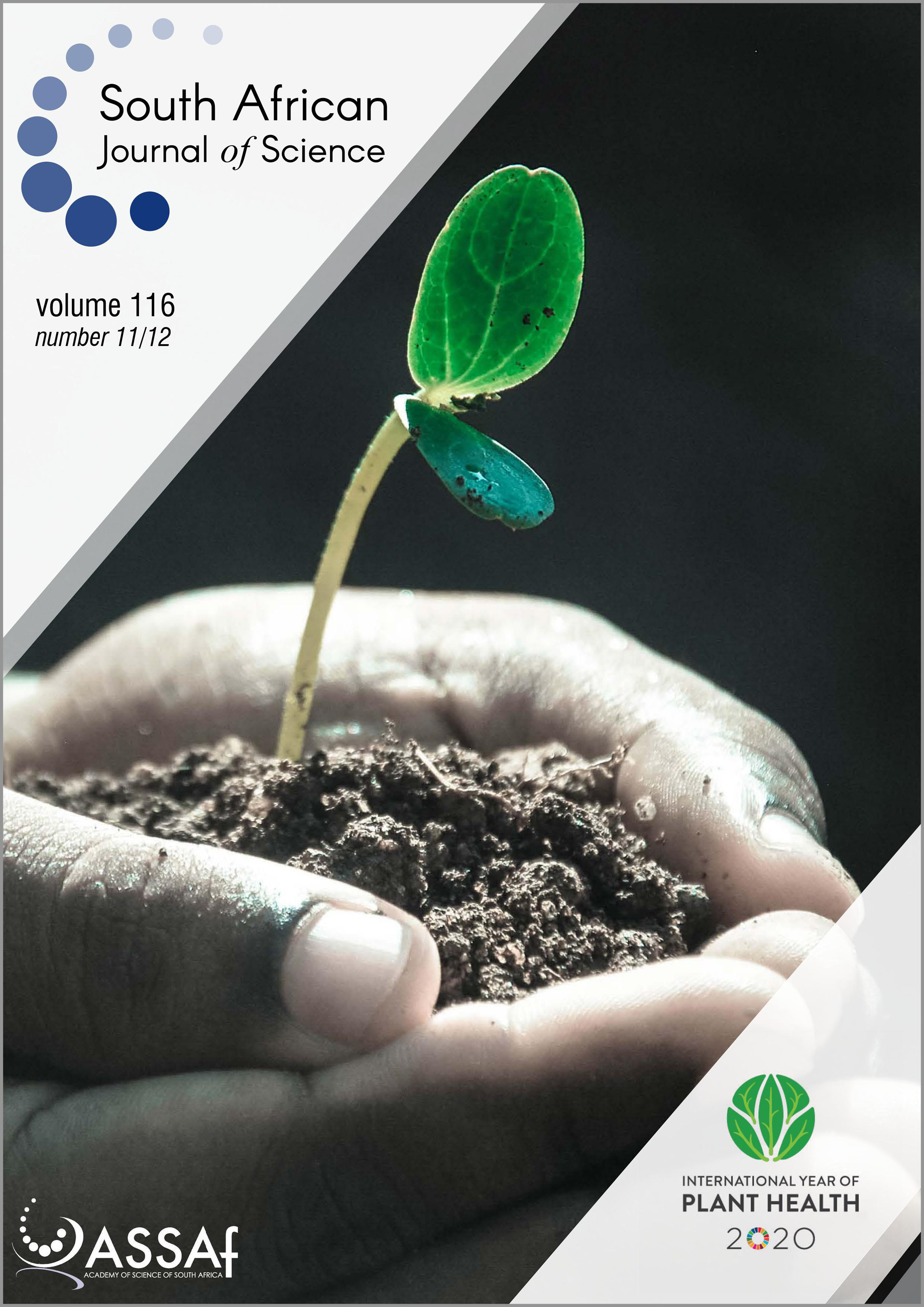Effect of northern corn leaf blight severity on Fusarium ear rot incidence of maize
DOI:
https://doi.org/10.17159/sajs.2020/8508Keywords:
AUDPC, Exserohilum turcicum, fumonisin, Fusarium verticillioides, HPLCAbstract
Northern corn leaf blight (NCLB) caused by Exserohilum turcicum and Fusarium ear rot caused by Fusarium verticillioides, are economically important maize diseases in South Africa. The effect of induced plant stress by NCLB on F. verticillioides ear rot and fumonisin production is unknown. Four field trials were conducted during 2016/2017 and 2017/2018 (November and December planting dates) at the Agricultural Research Council – Grain Crops in Potchefstroom (South Africa). Three maize cultivars with varying resistance levels to NCLB were selected (IMP50-10B – susceptible, BG3292 – moderately susceptible, DKC 61-94BR – resistant). NCLB severities were created through eight treatments: TMT1 – maximum control (three fungicide applications); TMT2 – standard control (two fungicide applications) and TMT3 – natural control (not inoculated or sprayed). The remaining treatments were inoculated with a cocktail of five NCLB races (Race 3, 3N, 23, 23N and 13N): TMT4 (five weeks after planting / WAP); TMT5 (five and six WAP); TMT6 (five, six and seven WAP); TMT7 (six and seven WAP); and TMT8 (seven WAP). Maize ears were naturally infected with F. verticillioides. Fifteen random plants were labelled at dent stage and NCLB severity (%), area under the disease progress curve, ear rot diseased area, ear rot severity (%), ear rot incidence (%) and total fumonisins (FB1+FB2+FB3; ug/kg) were established. Low levels of cob rot severity and fumonisins were obtained in all four trials. NCLB severity did not affect ear rot related parameters measured. Mean fumonisin levels were below the South African tolerance levels. Fumonisin concentrations differed significantly between cultivars but was not affected by NCLB severity or the cultivar x treatment interaction.
Significance:
- This is the first study to investigate the effect of NCLB severity as a predisposing factor of ear rot incidence and severity of maize.
- The study confirmed that ear rot incidence and severity are not impacted by secondary stressors induced by NCLB, and that the cultivation of NCLB-resistant varieties would not bring about lower ear rot incidences.
Published
Issue
Section
License

All articles are published under a Creative Commons Attribution 4.0 International Licence
Copyright is retained by the authors. Readers are welcome to reproduce, share and adapt the content without permission provided the source is attributed.
Disclaimer: The publisher and editors accept no responsibility for statements made by the authors
How to Cite
- Abstract 798
- PDF 684
- EPUB 215
- XML 292
Funding data
-
National Research Foundation
Grant numbers 105981












.png)